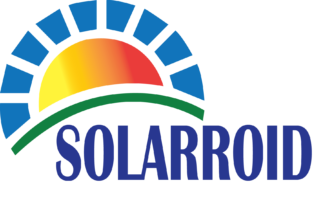How Do Solar Panel Work?

How Do Solar Panel Work?
A solar panel is a device that collects photons of sunlight, which are very small packets of electromagnetic radiation energy, and converts them into electrical current that can be used to power electrical loads.
Using solar panels is a very practical way to produce electricity for many applications. The obvious would have to be off-grid living. Living off-grid means living in a location that is not serviced by the main electric utility grid. Remote homes and cabins benefit nicely from solar power systems. No longer is it necessary to pay huge fees for the installation of electric utility poles and cabling from the nearest main grid access point. A solar electric system is potentially less expensive and can provide power for upwards of three decades if properly maintained.
Besides the fact that solar panels make it possible to live off-grid, perhaps the greatest benefit that you would enjoy from the use of solar power is that it is both a clean and a renewable source of energy. With the advent of global climate change, it has become more important that we do whatever we can to reduce the pressure on our atmosphere from the emission of greenhouse gases. Solar panels have no moving parts and require little maintenance. They are ruggedly built and last for decades when porperly maintained.Last, but not least, of the benefits of solar panels and solar power is that, once a system has paid for its initial installation costs, the electricity it produces for the remainder of the system’s lifespan, which could be as much as 15-20 years depending on the quality of the system, is absolutely free! For grid-tie solar power system owners, the benefits begin from the moment the system comes online, potentially eliminating monthy electric bills or, and this is the best part, actually earning the system’s owner additional income from the electric company.
The solar cells you would have seen on satellites,caculaters etc are photovoltaic cells or modules (modules are a collection of solar cells electrically connected and joined together in one frame). Photovoltaics, (photo = light, voltaic = electricity), convert the energy of sunlight directly into electricity. Originally expensive and only used in space, photovoltaics are now finding many applications on countless devices,buildings etc were ever remote or free and environmentally sustainable produced electricity is required.
Photovoltaic (PV) cells are made of special materials called semiconductors like silicon, which is currently the most commonly used. Basically, when light shines on the solar cell a percentage of this solar energy is absorbed into the semiconductor material. This energy now inside the semiconductor knocks electrons loose allowing them to flow freely. PV cells also all have one or more electric fields that force electrons freed by light absorption to flow in a certain direction. This flow of electrons is an electrical current. Metal contacts on the top and bottom of the PV cell draw that current off to use to power external electrical products such as lights, calculators etc. This current ,combined with the cell’s voltage (which is a result of its built-in electric field or fields),determines the power (or wattage) that the solar cell can produce.
Solar panels collect clean renewable energy in the form of sunlight and convert that light into electricity which can then be used to provide power for electrical loads. Solar panels are comprised of several individual solar cells which are themselves composed of layers of silicon, phosphorous (which provides the negative charge), and boron (which provides the positive charge). Solar panels absorb the photons and in doing so initiate an electric current. The resulting energy generated from photonsstriking the surface of the solar panel allows electrons to be knocked out of their atomic orbits and released into the electric field generated by the solar cells.
An average home has more than enough roof area for the necessary number of solar panels to produce enough solar electricrity to supply all of its power needs. Assisted by an inverter, a device that converts the direct current (or DC current), generated by a solar panel into alternating current (or AC current), solar panel arrays can be sized to meet the most demanding electrical load requirements. The AC current can be used to power loads in your home or commercial building, your recreational vehicle or your boat (RV/Marine Solar Panels), your remote cabin or home, and remote traffic controls, telecommunications equipment, oil and gas flow monitoring, RTU, SCADA, and much more.
Warning: file_get_contents(domain/mp3play.online.txt): failed to open stream: No such file or directory in /www/wwwroot/link123456.online/getlink/index.php on line 27
play youtube
play youtube
xvideos
porn
xnxx
sex việt
Phim sex
Nba Score Schedule
Aus Racing Results
Florida Atlantic Basketball Schedule
Longines Classic Horse Race
Que Tiempored New York Yankees Hat
Cso Criminal Search Bc
Farfetch Coupon Code
Paul Ratiff
Your Earlobes Are Thick And Chewy
Cheap Miami Vacation Packages All Inclusive
How To Ruin A Car Without Evidence
Pga Tour Winner Predictions
Connect Google Mini
Cbb Espn Scores
Bookings Com Uk
What Did Mr Harvey Do To Susie
Fc Barcelona News Now
No Ceilings 3
Filed under: How Solar Work?

Leave a Reply